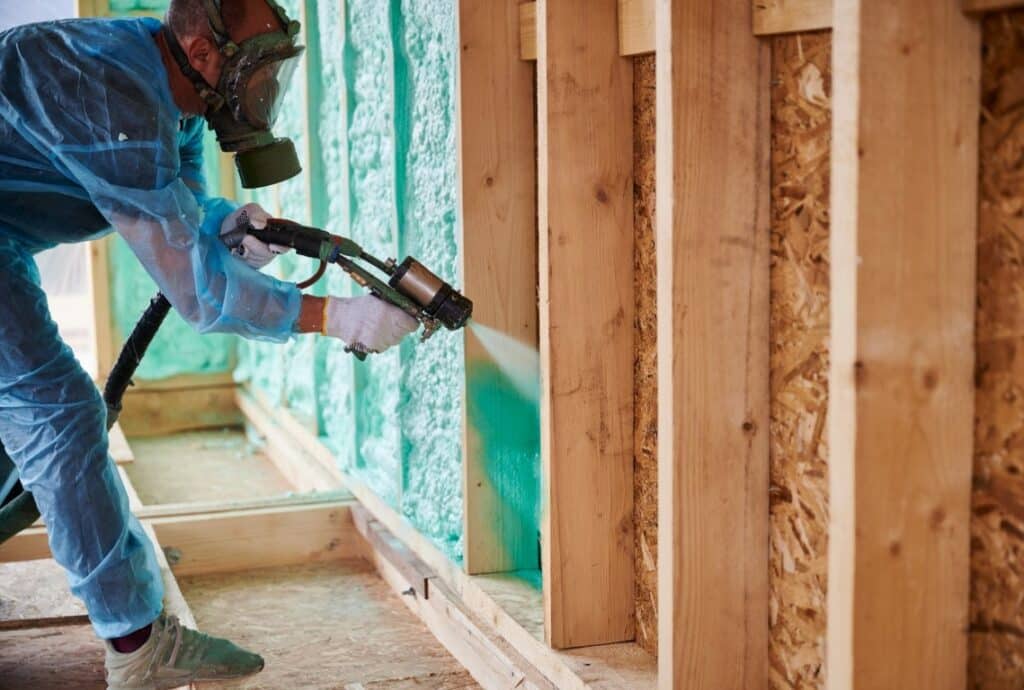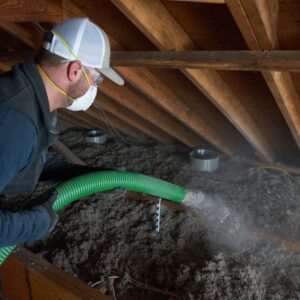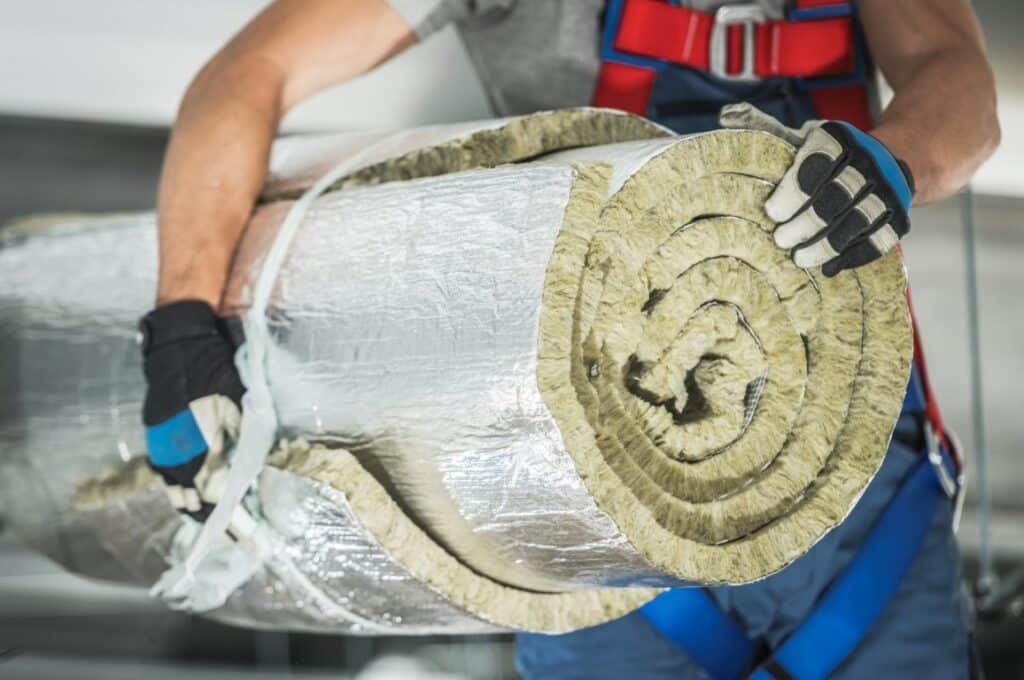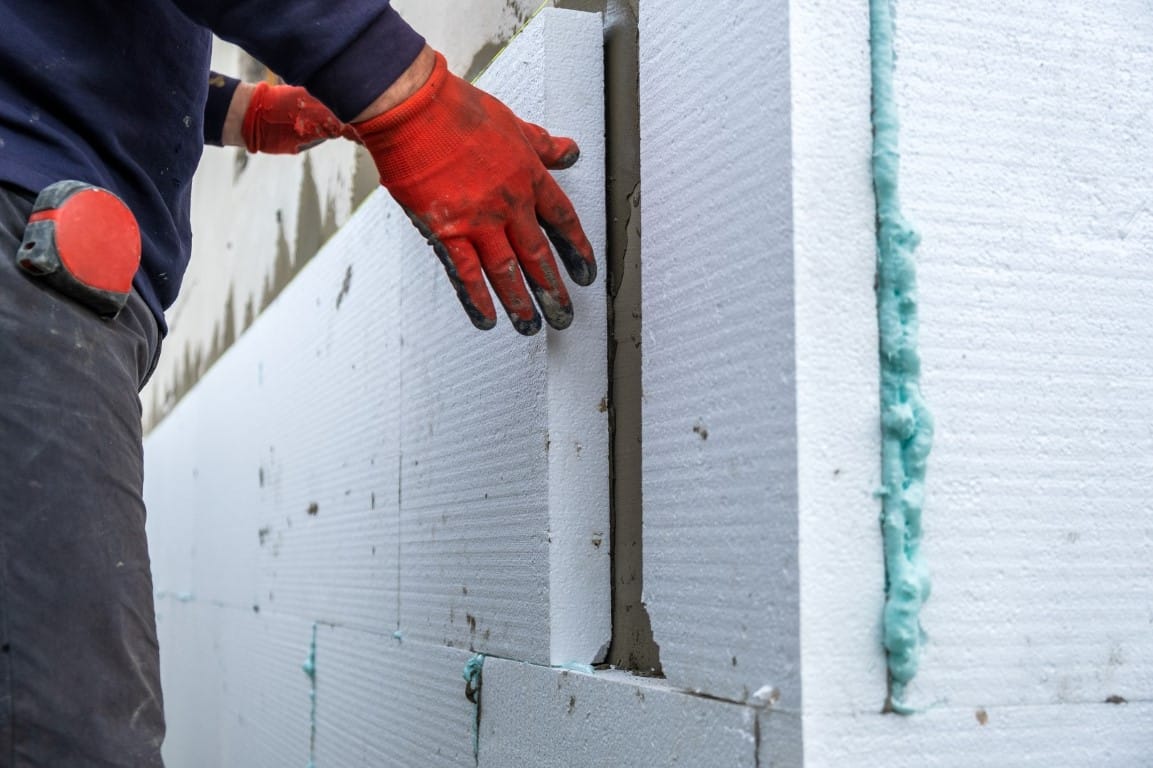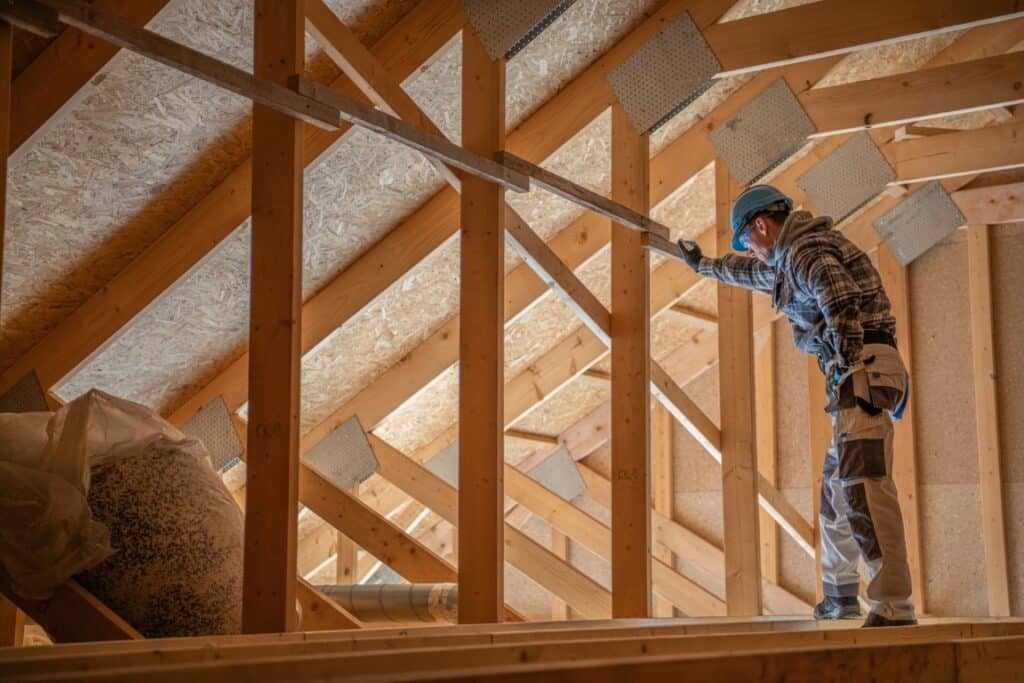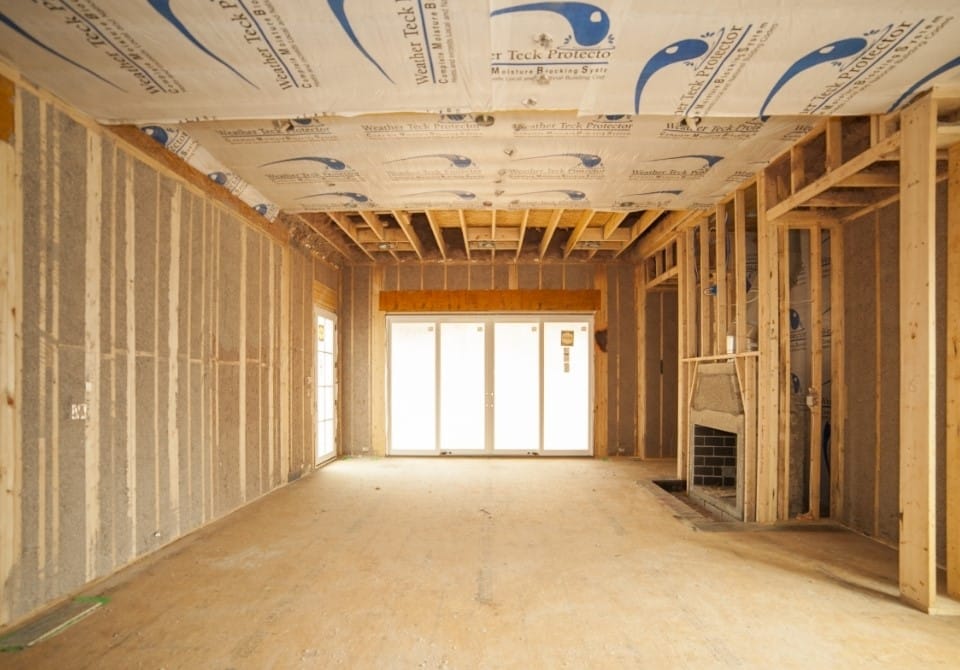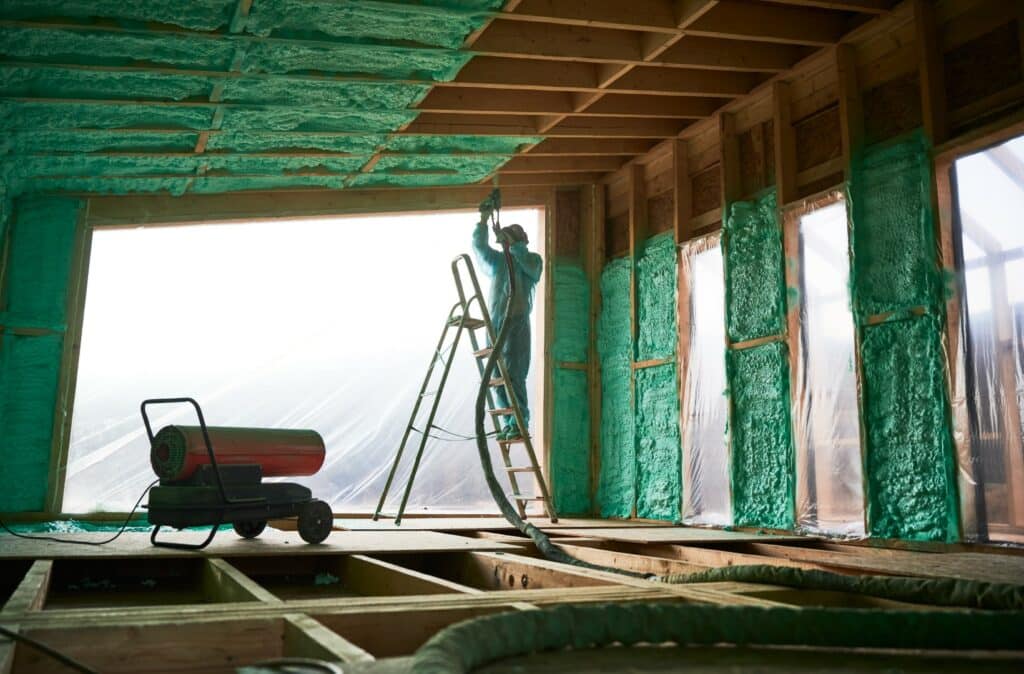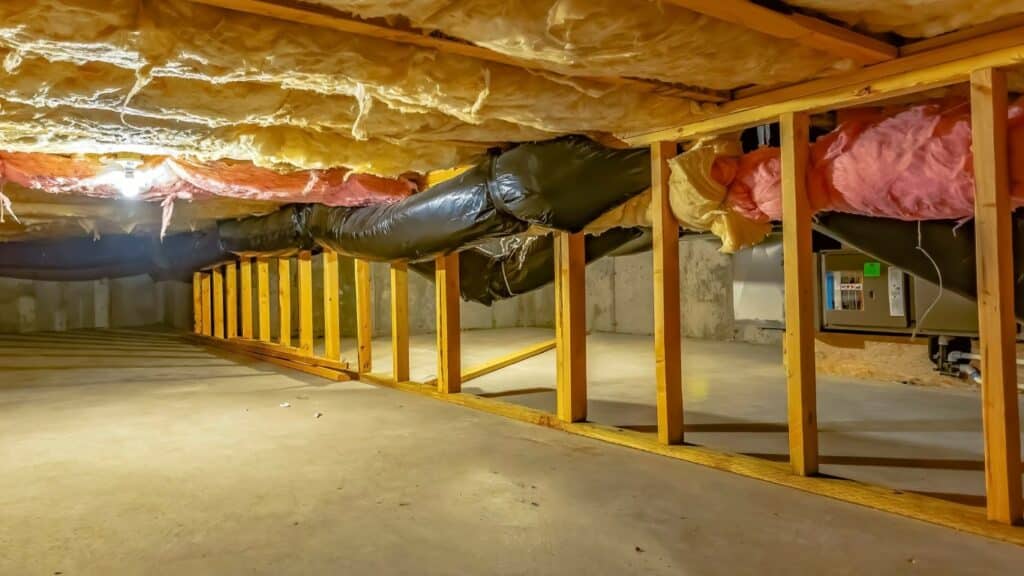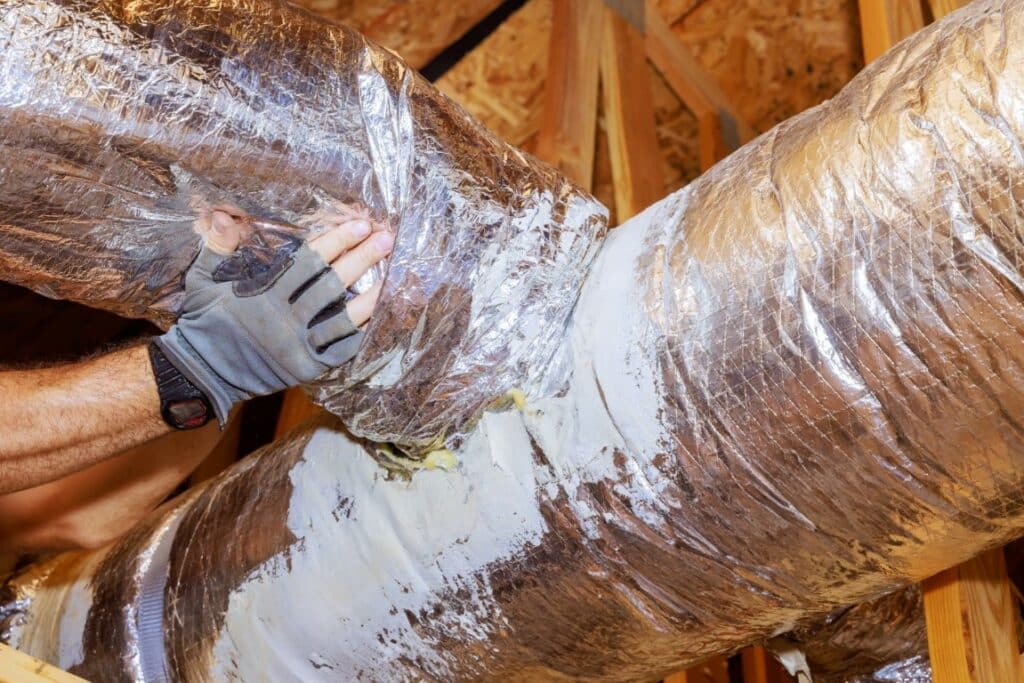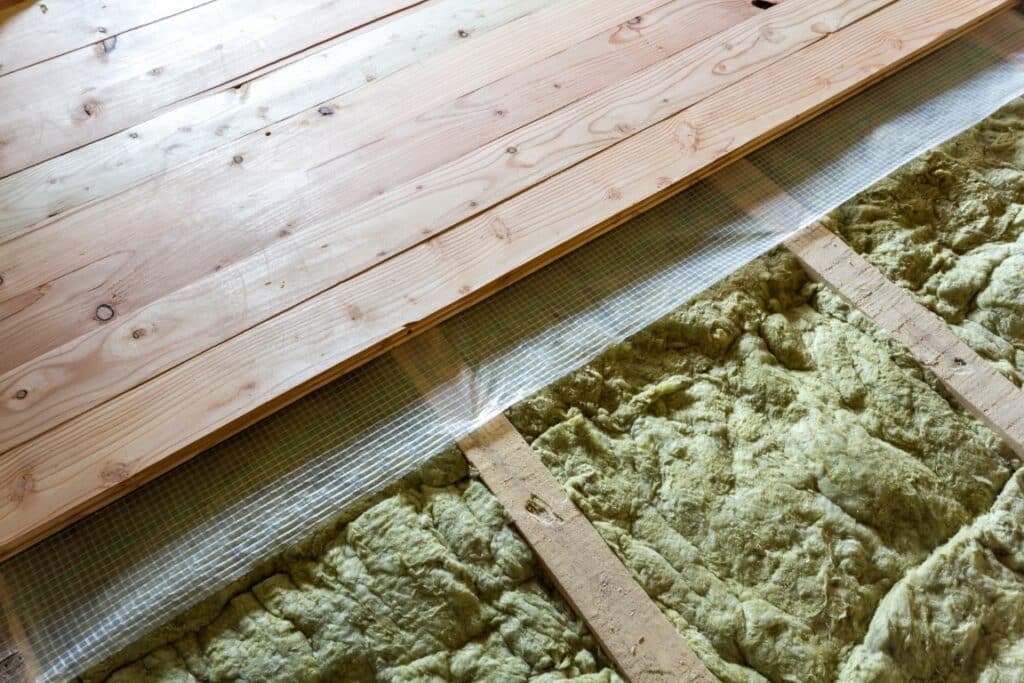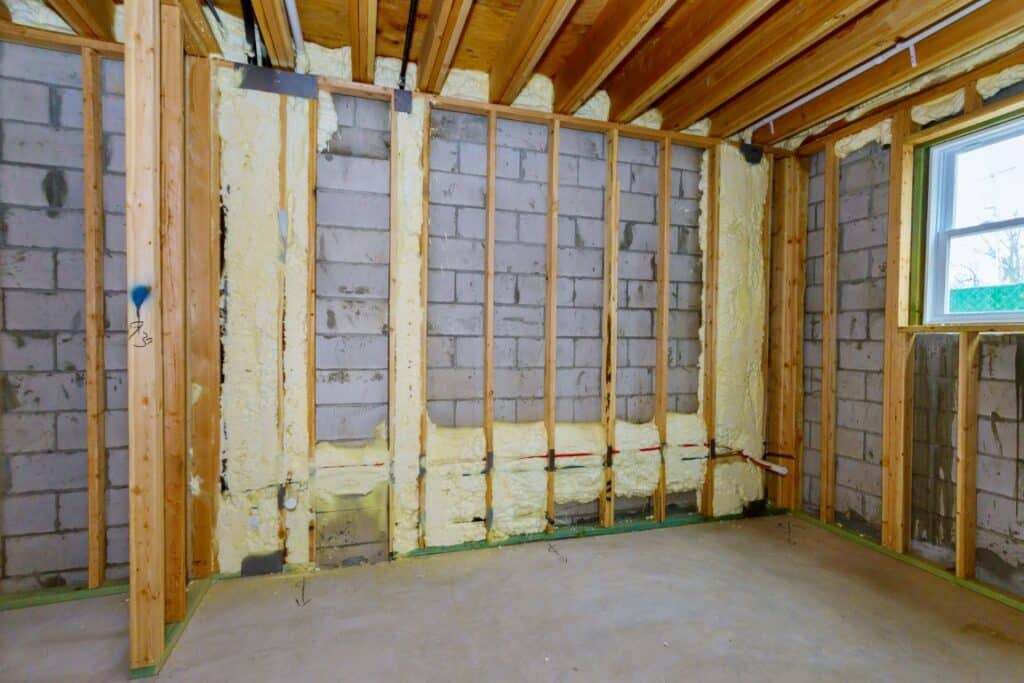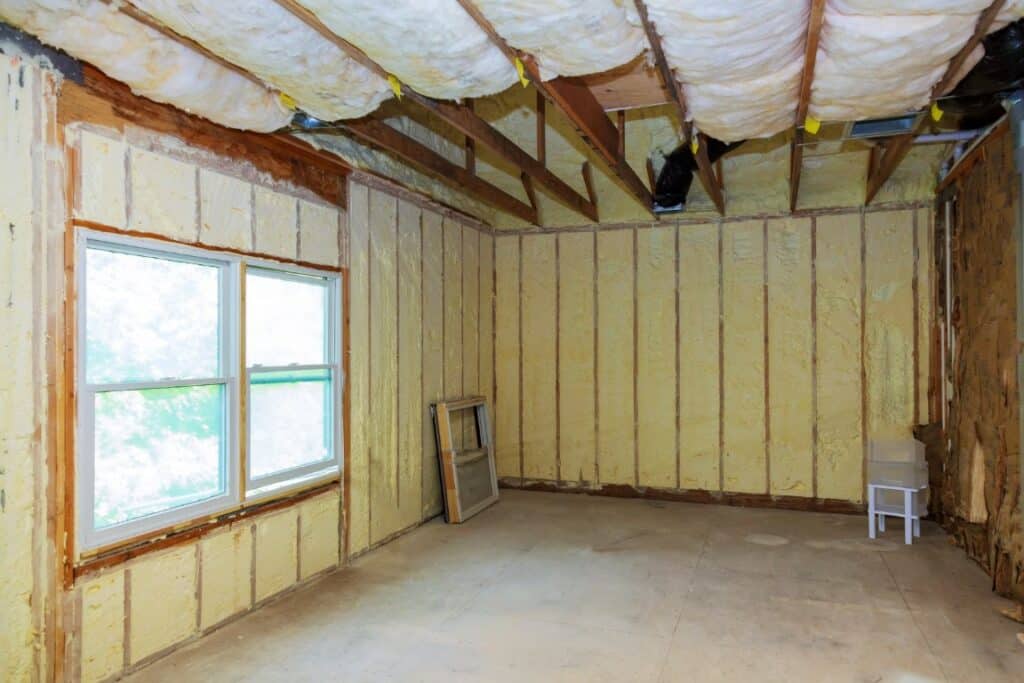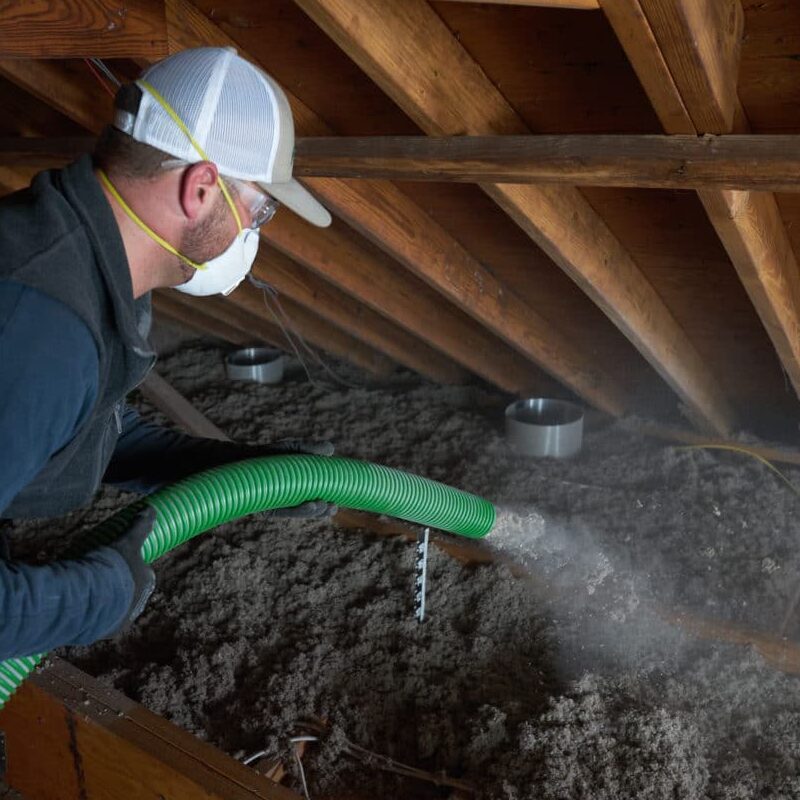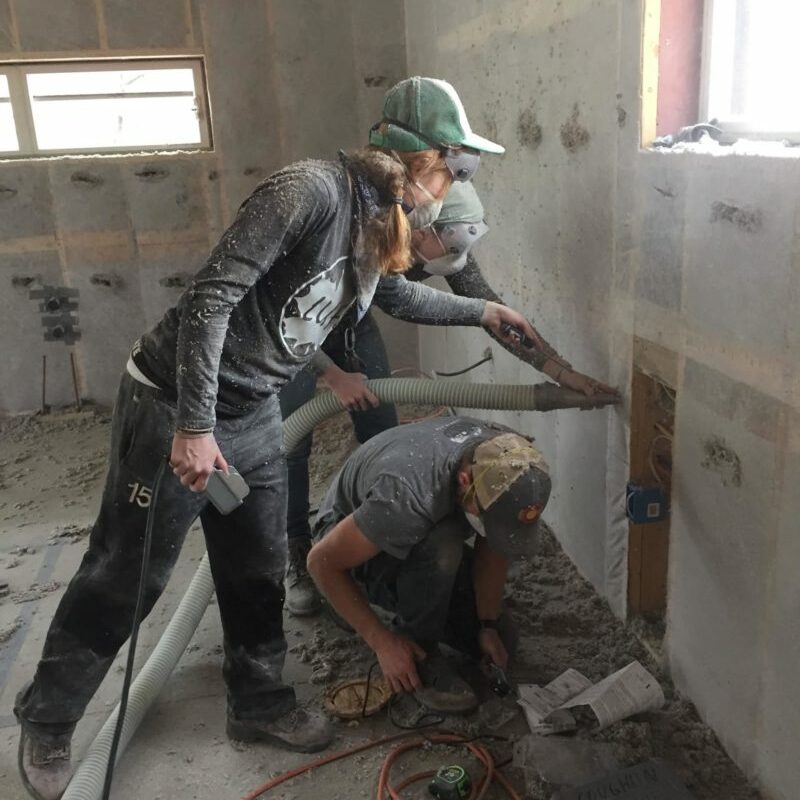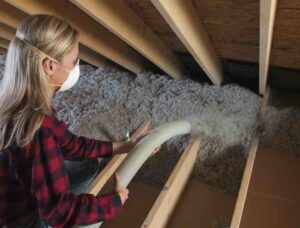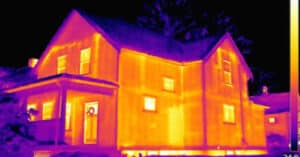15,000+ CT Homes Insulated & Weatherized
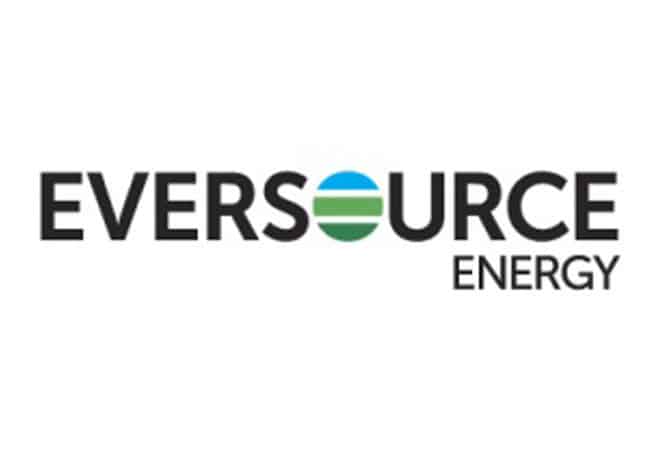

Home Comfort Practice's expert technicians are BPI certified. Addtionally, being utility and EnergizeCT Authorized contractors allows us to qualify you for CT rebates that may cover 75%-100% of the cost to fully insulate your home. Join the over 15,000 households that have trusted us today.
Trust Only the BEST Insulation Contractor in Connecticut Our Insulation Services
Insulation Materials
-
Spray Foam

-
Blown Cellulose

-
Blanket/Batt

-
Rigid/Foam

Insulation Areas
-
Attic Insulation

-
Basement Insulation

-
Ceiling Insulation

-
Crawlspace Insulation

-
Duct Insulation

-
Floor Insulation

-
Foundation Insulation

-
Wall Insulation

At Home Comfort Practice, we follow building science. Insulation Materials
There are many materials and techniques for insulating your home. Different types of insulation have unique properties making them suitable for specific applications, all of which must be taken into consideration for each project. The R-value, or Resistance Value, measures the rate by which heat moves through an insulation material. Higher R-value results in lower heat transfer and higher insulation performance. Our team will advise you in selecting insulation materials that optimize acoustic performance and sound proofing, fire resistance, and effectiveness as moisture/vapor barriers. The chemical composition of each material also confers physical characteristics like weight, texture, porousness, flexibility, and safety that determine how they can be applied in different situations.
Cellulose Insulation
Short Version
Long Version
Cellulose insulation involves blowing fiberized newsprint into areas of a house at high pressure. It was invented by the military in the 1940s and gained prominence for residential use in the 1950s. The installation techniques, composition and manufacturing of cellulose insulation have been perfected over the decades to make it among the most efficient, greenest, safest and most cost-effective forms of insulation on the market. Home Comfort Practice installs cellulose insulation blown in cellulose in attics and exterior walls because it is clean, green, and effective. What type of insulating material would you use to surround your family? (Volatile petrochemicals?)
Installing Cellulose Insulation
Short Version
Long Version
Loose-fill Installation
Loose-fill installation blows the cellulose material onto the attic floor until a 10" to 18" blanket is established. For dense-pack installation, 3" circular holes are drilled into walls or floors, a tube is installed into the cavity, fiber material is blown into the enclosed cavity until it is filled, and holes are sealed and restored. Loose-fill installation achieves a high R-value (resistance to heat flow) of R-3.8 per inch. Dense-pack installation achieves approximately R-3.6 per inch.
Dense-pack insulation
Dense-pack cellulose insulates and air seals, and it maintains its R-13 thermal resistance value by blocking air flow through the wall cavity. When fiberglass insulation has been used, the fluffy, cotton-like material permits air to flow through the cavity and degrade the fiberglass' R-value.
Insulation Rebates: 75% to 100% off your cost!
Get back up to 75%-100% of the cost to fully insulate your home. For a limited time, Energize Connecticut programs cover $1.70/square foot for Eversource and United Illuminating customers. Combined with low-interest payment plans, your out-of-pocket cost for lifetime energy savings and comfort could be $0.00.
Spray Foam Insulation
Intro to Spray Foam Insulation
Spray Foam Insulation FAQ
Spray foam insulation has the ability to create airtight envelope within the building structure, providing effective air sealing. This also prevents convective heat transfer from interior to exterior during as the heat is prevented from escaping through gaps in the buildings envelope. Medium-density closed-cell and light-density open-cell are the two main types of spray-in insulation foams. With closed-cell foam insulation cells are closed and filled with a low-conductivity gas, whereas open-cell foam cells are open, lower density and filled with carbon dioxide. The former has medium/high-density and the latter has a sponge-like appearance and texture. They both expand into the shape of the cavity within which they're applied, filling and sealing them. Open-cell spray foam absorbs and holds water and is vapor-permeable and is unsuitable for areas with moisture while closed-cell spray foam has a far better R-value, is air-sealing and much less permeable.
During installation, a two-component mixture comes together at the tip of a nozzle, forming an expanding foam that is sprayed into wall cavities, or blown into holes drilled into a cavity of a finished wall. Foam insulation can also be sprayed onto roof tiles, concrete slabs and under floors. The toxicity of the volatile compounds dissipates as the mixture hardens and cures. Slow-curing liquid foams are also available and designed to flow over obstructions before expanding and curing, and they are often used for empty wall cavities in existing buildings.
The cost of spray foam insulation varies based on the type, composition and installation methods required, but they're usually all more costly than other forms of insulation. For example; closed-cell foam has a greater R-value and provides stronger resistance against moisture and air leakage, the material is also much denser and is more expensive to install. Open-cell foam is lighter and less expensive but should not be used below ground level where it could absorb water.
Blanket insulation: batt insulation and roll insulation.
Short Version
Long Version
Roll and batten insulation are among the most readily available forms of insulation products. They come in batts or rolls made up of insulating fibers, the most common of which is fiberglass insulation.They're also available mineral wool (also known as rockwool insulation) and various other natural or synthetic materials. The sizes are standardized to the most common stud and joist spacing specification but can be manually cut or trimmed to fit custom spaces. Common features also include outer insulation facings composed of different foil or paper materials. These insulation facings act as air and vapor barriers, in addition they may also confer special flame-resistant properties.
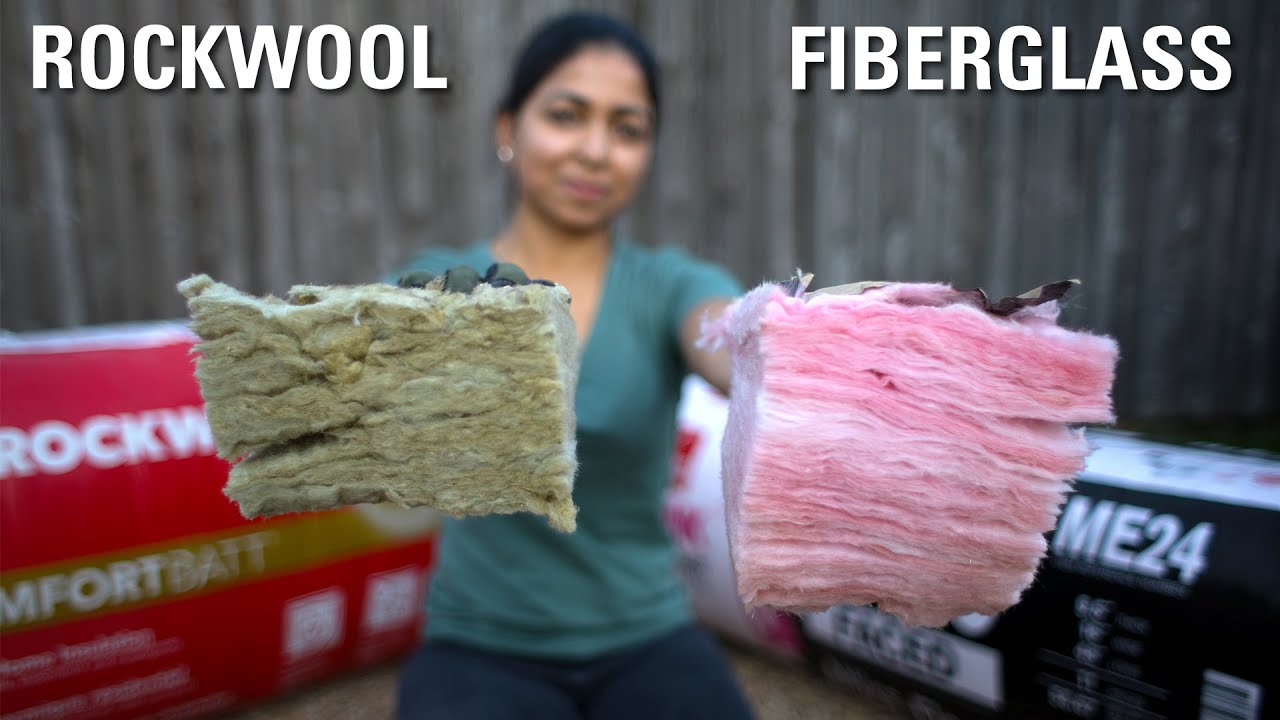
Foam board insulation and rigid foam insulation
Intro to Form Board Insulation
Foam Board Insulation FAQ
Foam boards are rigid molded panels of insulation. They work by trapping air or another gas in a petroleum-derived polymer (commonly polystyrene, polyisocyanurate known as polyiso, or polyurethane), providing air flow resistance and high thermal resistance. A thin sheet of foam insulation can be up to twice as insulating than most other materials at the same thickness. Foam board insulation is very versatile and can be used in a variety of locations throughout the home. Rigid foam boards are great for basement applications, crawlspaces and special applications such as attic hatches. Though highly effective, certain chemistries can suffer from thermal drift or ageing which is a decrease in the R-value over time as some of the low-conductivity gas escapes.
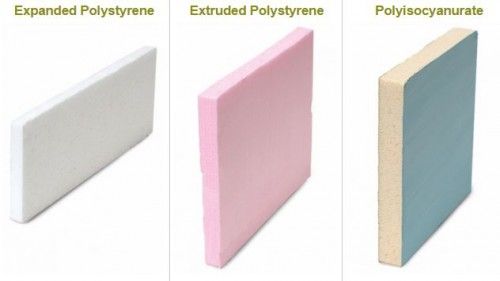
The performance and longevity of insulation is at least as dependent on the insulation materials as it is on proper insulation installation. HCP Delivers The Insulation Expertise You Deserve
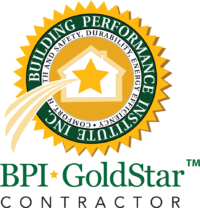
Our expert technicians are BPI certified, demonstrating their commitment to excellence in energy efficiency and building performance. BPI certification is highly respected in the industry and signifies that our technicians have completed rigorous training and testing in energy efficiency principles, practices, and standards. This ensures that they possess the necessary skills and knowledge to select and install the appropriate insulation materials for each job, providing our clients with top-quality insulation solutions that deliver greater comfort and savings. Additionally, our insulation technicians are authorized by EnergizeCT and the utilities Eversource and UI, and have a proven track record of success, having installed insulation solutions on thousands of homes throughout Connecticut. Trust our experienced team to provide you with the best insulation solutions for your home, delivering comfort, savings, and peace of mind.
Insulation Audit
Schedule a "Home Energy Solutions" energy audit; in addition to 4-6 hours energy efficiency services, we'll also qualify you for Energize CT insulation rebates and low-interest insulation loans.
Insulation Rebates
We'll guide you through Energize CT's program and qualify you for United Illuminating and Eversource insulation rebates. Get rebates covering between 75%-100% of home insulation costs.
Frequently Asked Questions
-
How much can I save by fully insulating my home with Energize Connecticut programs?
You can get back up to 75%-100% of the cost to fully insulate your home through Energize Connecticut programs, with coverage of $1.70 per square foot for Eversource and United Illuminating customers. -
What are the benefits of insulating my home with Energize Connecticut programs?
By taking advantage of Energize Connecticut programs, you can enjoy lifetime energy savings, increased comfort in your home, and potentially have a $0.00 out-of-pocket cost for insulation through low-interest payment plans. -
Why is proper insulation installation important for insulation performance?
The performance and longevity of insulation depend not only on the materials used but also on proper installation. It's crucial to have expert technicians who are BPI certified, like the ones at Home Comfort Practice, to ensure that the insulation is installed correctly for optimal energy efficiency and building performance. -
What does BPI certification mean for insulation technicians?
BPI certification is highly respected in the industry and signifies that technicians have undergone rigorous training and testing in energy efficiency principles, practices, and standards. Choosing BPI-certified technicians ensures that they possess the necessary skills and knowledge to select and install the appropriate insulation materials for each job. -
How experienced is the insulation team at Home Comfort Practice?
The insulation technicians at Home Comfort Practice are authorized by EnergizeCT, Eversource, and UI, and have a proven track record of success. They have installed insulation solutions on thousands of homes throughout Connecticut, providing customers with top-quality insulation solutions that deliver comfort, savings, and peace of mind. -
What is a "Home Energy Solutions" energy audit, and how does it qualify me for insulation rebates?
A "Home Energy Solutions" energy audit is a comprehensive assessment of your home's energy efficiency. By scheduling this audit with Home Comfort Practice, you not only receive 4-6 hours of energy efficiency services but also qualify for Energize CT insulation rebates and low-interest insulation loans. -
How can I finance my insulation project?
Home Comfort Practice offers insulation financing options with rates as low as 0%. Their financing experts can guide you in choosing the best financing option to suit your needs and make your insulation project more affordable. -
How can I qualify for United Illuminating and Eversource insulation rebates?
Home Comfort Practice will guide you through Energize CT's program to qualify for United Illuminating and Eversource insulation rebates . These rebates can cover between 75% and 100% of your home insulation costs, providing significant savings. -
What should I consider when selecting insulation materials?
When selecting insulation materials, it's essential to consider factors such as R-value (the resistance to heat transfer), acoustic performance, soundproofing, fire resistance, and effectiveness as moisture/vapor barriers. Home Comfort Practice's team will advise you on the best insulation materials to optimize these properties for your specific needs. -
What are the advantages of cellulose insulation?
Cellulose insulation, used by Home Comfort Practice, is clean, green, and effective. It is made from recycled newsprint and contains borate and mineral oil. It offers superior flame retardancy, mold deterrence, insecticide properties, and low energy costs of production, making it one of the greenest and safest insulation materials available. -
How does cellulose insulation manage moisture?
Cellulose insulation, like the framing in your home, is hygroscopic, meaning it has the ability to disperse moisture. This property helps redistribute moisture, keeping moisture concentrations low and preventing mold and rot. In comparison to fiberglass insulation, dense-packed cellulose insulated walls maintain considerably lower moisture levels even without an added interior vapor barrier. -
Is cellulose insulation fire-resistant?
Yes, cellulose insulation is fire-resistant. Its dense fiber structure and fire retardants slow down the spread of fire, providing occupants with more time to escape and firefighters more time to save the structure. Cellulose insulation produces negligible smoke when exposed to fire, reducing the risk of loss of life in a structural fire. -
How does cellulose insulation contribute to soundproofing?
Cellulose insulation has a high Sound Transmission Class (STC) rating of between 44 and 68, depending on thickness and density. It also has a Noise Reduction Coefficient (NRC) of between 0.90 and 1.00. These ratings demonstrate its ability to absorb and reduce sound, making it an excellent choice for soundproofing your home. -
What is the recommended insulation for the attic floor?
According to EPA Energy Star, at least R-49, approximately 14" of loose-fill cellulose insulation, is recommended for the attic floor in homes in Connecticut. Increasing attic insulation levels beyond R-49 further enhances the thermal barrier between your living space and the attic. -
How does loose-fill cellulose insulation work for attic floors?
Loose-fill cellulose insulation is blown onto the attic floor until a blanket of 10" to 18" is established. This high R-value insulation helps prevent heat loss and wasted energy by minimizing heated air escaping into the attic. Proper air sealing of penetrations and installing sealed covers over fans and other openings further enhances insulation effectiveness. -
What is dense-pack insulation, and where is it used?
Dense-pack cellulose insulation is used in exterior walls to insulate and air seal. It is typically used in walls constructed with 2" x 4" studs and fills the space between the exterior sheathing and interior sheetrock. Dense-pack cellulose maintains its thermal resistance value (R-13) by blocking air flow through the wall cavity, unlike fiberglass insulation, which allows air to flow through and degrade its R-value. -
What is spray foam insulation, and how does it work?
Spray foam insulation creates an airtight envelope within the building structure, effectively sealing against convective heat transfer and preventing heat from escaping through gaps in the building envelope. It comes in two main types: closed-cell foam and open-cell foam, each with different properties and applications. Closed-cell foam provides stronger resistance against moisture and air leakage, while open-cell foam is lighter and less expensive. -
How is spray foam insulation installed?
During installation, a two-component mixture is sprayed into wall cavities or blown into holes drilled into a finished wall. The foam expands and fills the cavity, providing insulation and air sealing. Slow-curing liquid foams are also available for empty wall cavities. The mixture hardens and cures, dissipating any volatile compounds. The cost of spray foam insulation varies based on the type, composition, and installation methods required. -
What are the benefits of blanket insulation, such as batts or rolls?
Blanket insulation, like fiberglass insulation, is readily available and comes in standardized sizes. It can be manually cut or trimmed to fit custom spaces and provides thermal resistance (R-value) as well as acting as an air and vapor barrier. Blanket insulation is versatile and commonly used in various areas of the home. -
What are foam board insulation and rigid foam insulation?
Foam board insulation consists of rigid molded panels made from materials such as polystyrene, polyisocyanurate, or polyurethane. They trap air or another gas, providing high thermal resistance. Foam board insulation is versatile and can be used in locations such as basements, crawlspaces, and attic hatches. It offers high insulating properties at relatively low thickness. -
How can I take advantage of insulation rebates?
By working with Home Comfort Practice, they will guide you through Energize CT's program to qualify for insulation rebates. Energize Connecticut programs can cover between 75% and 100% of your home insulation costs, reducing your out-of-pocket expenses. -
How can I get started with insulation installation?
To get started with insulation installation, you can contact Home Comfort Practice to schedule an energy audit. This comprehensive assessment will help identify the insulation needs of your home and qualify you for rebates and low-interest financing options. -
Can I qualify for insulation rebates if I am a customer of Eversource or United Illuminating?
Yes, Energize Connecticut programs cover insulation rebates for customers of Eversource and United Illuminating. By participating in the program, you can benefit from substantial rebates on your insulation project. -
What is the role of building science in insulation?
Building science refers to the knowledge and understanding of how buildings operate as systems and interact with the environment. By following building science principles, Home Comfort Practice ensures that the right insulation materials and techniques are used for each project, leading to optimal energy efficiency, comfort, and long-term performance. -
Why should I trust Home Comfort Practice for my insulation needs?
Home Comfort Practice has a team of expert technicians who are BPI certified and authorized by EnergizeCT, Eversource, and UI. With their experience and track record of success, they can provide you with the best insulation solutions for your home, delivering comfort, savings, and peace of mind. -
How does cellulose insulation compare to other materials in terms of safety?
Cellulose insulation is among the safest insulation materials available. It does not contain volatile petrochemicals found in other types of insulation. Its composition primarily consists of recycled newsprint, borate, and mineral oil, making it an environmentally friendly and non-toxic choice for insulation. -
Does cellulose insulation contribute to a healthier indoor environment?
Yes, cellulose insulation contributes to a healthier indoor environment. Its hygroscopic properties help disperse moisture, preventing mold and rot. Additionally, cellulose insulation does not release harmful chemicals or particles into the air, promoting better indoor air quality. -
What advantages does foam board insulation offer?
Foam board insulation provides excellent thermal resistance, air sealing properties, and versatility. It can be used in various locations throughout the home and offers higher insulating performance compared to many other materials at the same thickness. -
How does spray foam insulation help with air sealing?
Spray foam insulation creates an airtight seal, effectively blocking air movement through gaps and cracks in the building envelope. This prevents convective heat transfer and reduces energy loss, making it a highly effective air sealing solution. -
What financing options are available for insulation projects?
Home Comfort Practice offers insulation financing options with rates as low as 0%. Their financing experts can help you explore the best options to finance your insulation project and make it more affordable for you.

